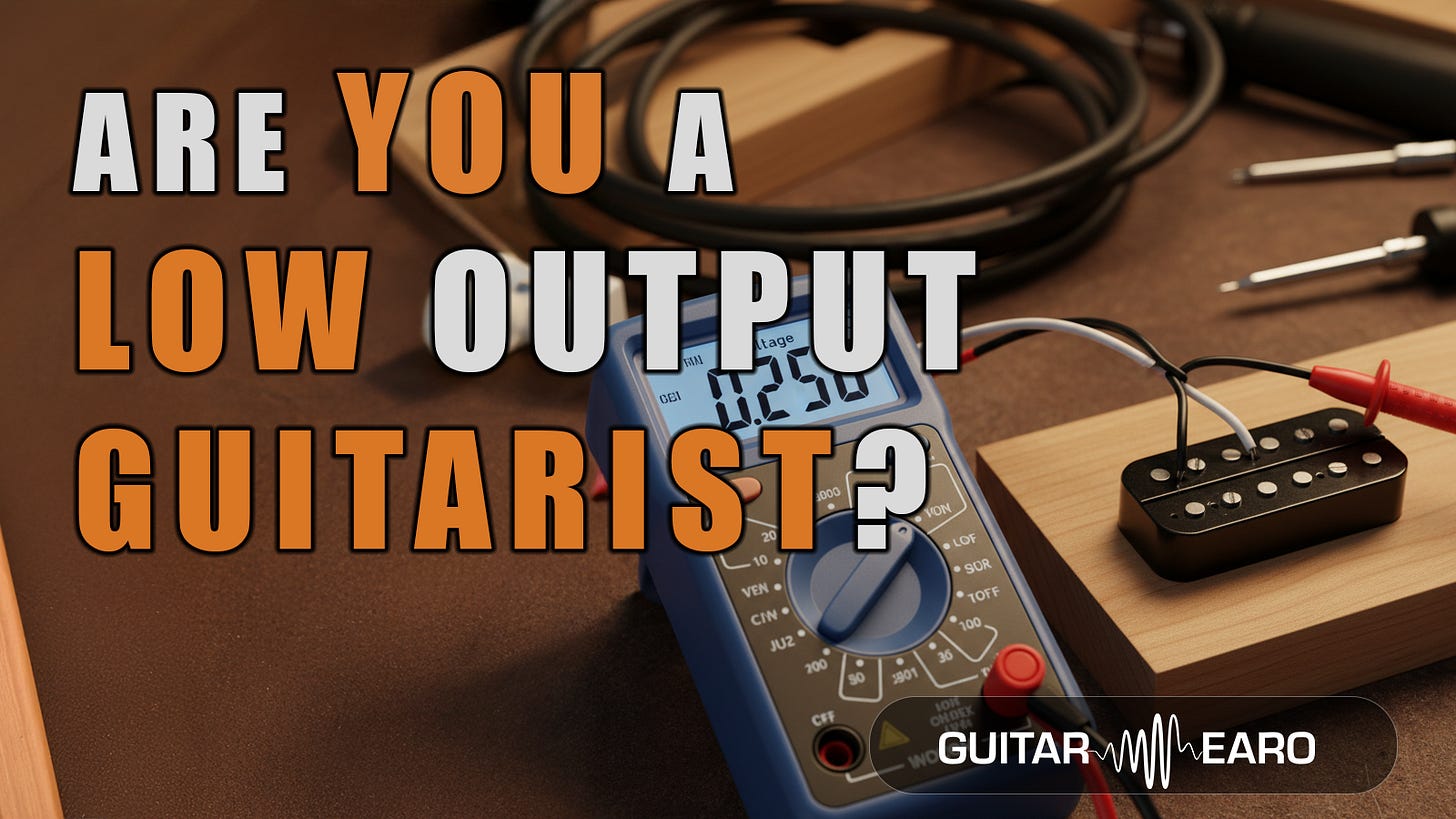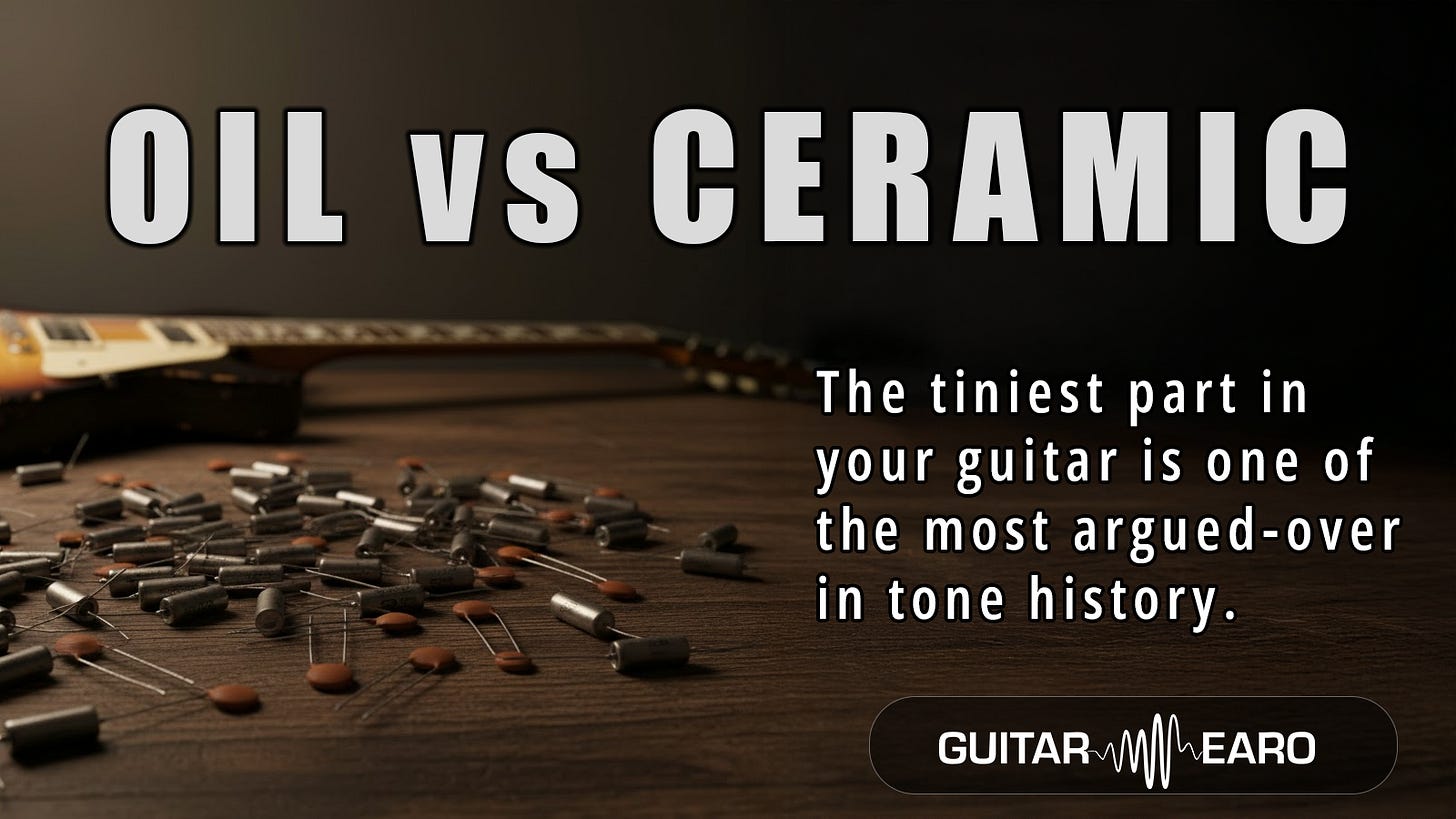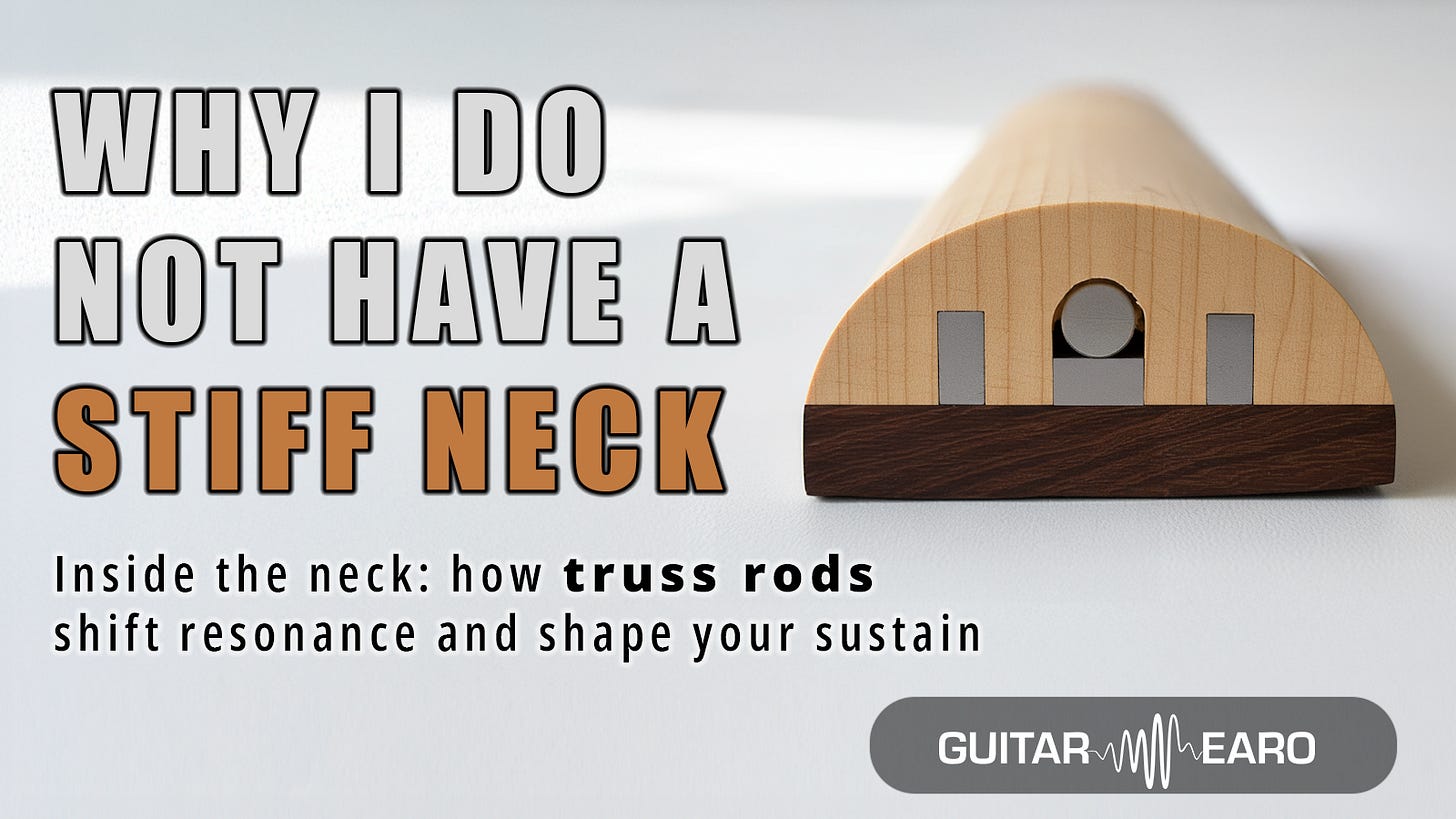Every guitarist has faced the question, usually at that dangerous late-night gear-browsing hour:
Do I want a hot pickup that will drive my amp harder, or a vintage-output design that keeps things clean and articulate?
This isn’t a superficial choice. Pickup output shapes not only loudness, but the way the guitar interacts with every part of the signal chain: the amp, the pedals, and, most importantly, the player’s hands.
What we actually mean by “output”
When a string vibrates, it disturbs the magnetic field around the pickup’s pole pieces. The copper wire coil translates that disturbance into voltage. The more turns of wire, the stronger the magnetic field, the higher the output.
On paper, “more output” sounds like a free lunch: louder, fatter, meaner. But in reality, every design choice trades one quality for another. Winding the coil hotter not only increases output, it also increases inductance. Inductance shifts the resonant frequency of the pickup downwards, away from sparkling treble and towards midrange emphasis.
A vintage-style PAF humbucker might sit in the 200–300 mV output range. A Seymour Duncan JB (a famously hot humbucker) can push 400–500 mV. Active designs like EMGs can exceed 700 mV, though because they use a low-impedance buffered circuit, comparing them directly to passives is tricky.
The point is that “hot vs vintage” is not just about volume. It’s about the frequency response curve baked into your tone before it even hits the first gain stage.
The philosophy of high output
Players who gravitate toward high-output pickups usually want one thing above all: immediacy. Slam a distorted amp with a stronger signal, and you get instant crunch without needing pedals or extreme amp settings.
That’s why heavy rock and metal players often prefer overwound humbuckers or actives. The pickup itself delivers a compressed, saturated tone that feels tight under the fingers. Palm-muted chugs thump with authority, fast alternate picking stays smooth, and single-note runs don’t get lost.
There’s also a practical benefit: if you walk into a studio or rehearsal and plug into an unfamiliar amp, a hot pickup guarantees you’re in “rock mode” straight away. You don’t need the amp to supply all the dirt; your guitar has already brought some to the table.
The criticism, of course, is that this compression comes at the expense of subtlety. Notes blur together more readily, dynamics flatten, and the amp has less headroom to respond to volume-knob adjustments. For some players, that’s a small price for reliability. For others, it’s missing the whole point of electric guitar expression.
The case for low output
A vintage-output pickup is, in many ways, the opposite philosophy. Instead of baking in aggression, it delivers a cleaner, more dynamic signal to the amp.
Take a well-made PAF clone in the low-to-mid 200 mV range. Through a clean amp, it sparkles, with a high resonant frequency that keeps the top end open. Roll into an overdriven amp channel, and the distortion comes from the tubes rather than the pickup. Crucially, the volume knob becomes a tool: turn it down to 6 or 7, and you get a usable clean tone; turn it back up, and you are in crunch territory.
This is why blues and classic rock players gravitate toward low-output designs. They want articulation, note separation, and the ability to shape distortion with their hands and guitar controls rather than relying solely on the pickup to deliver one “flavour” of drive.
Myths and contradictions
Like most things in guitar culture, the debate thrives on half-truths.
“Low-output pickups cannot drive an amp.” False. Put a ‘59 PAF clone into a cranked Marshall or a fuzz pedal, and you’ll have more distortion than you can handle. Eddie Van Halen famously used a rewound but still relatively modest-output PAF to push his plexi into legendary territory.
“High-output pickups are muddy.” Not always. While overwinding does reduce treble, pickup design involves trade-offs. Magnet type, coil geometry, and pot values all interact. A hot pickup into a bright amp can sound articulate, just as a low-output pickup into a dark amp can sound dull.
And then there are the genre-crossing counterexamples:
Metal players who use PAFs (because clarity trumps brute force in a dense mix).
Blues players who quietly install hotter humbuckers in their small combos to get natural drive at bar gig volumes.
The lines are blurrier than either camp wants to admit.
What’s really at stake
At the heart of this debate is a question of where you want your distortion to live.
With a high-output pickup, you’re committing to generating distortion right at the guitar. The sound is consistent, compressed, and reliable.
With a low-output pickup, you’re giving the amp and pedals more control. The sound is more dynamic, more variable, and often more interactive.
Neither approach is inherently “better.” They simply reflect different philosophies about how tone should be shaped.
The conclusion (and the challenge)
If there’s one takeaway, it’s this: pickup output is not about volume, it’s about philosophy.
Do you want your guitar to arrive at the amp already saturated, carrying its own compression and midrange punch?
Or do you want your guitar to hand the amp a wide-open signal, letting tubes and pedals do the heavy lifting?
That is why this debate never dies. It is not just about tone, but about identity. A guitarist who chooses high-output is saying something about how they want to feel under their fingers, just as a low-output player is saying something about how they want their amp to breathe.
So which one are you?
Are you a low-output purist or a high-output shredder?



